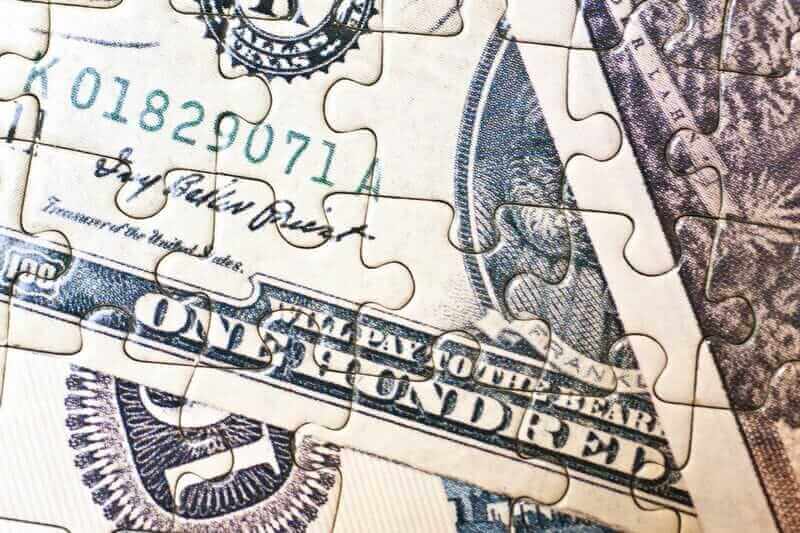
The dollar index (DXY00) on Wednesday fell by -0.36%. The dollar on Wednesday extended this week’s losses down to a 2-week low. Weaker-than-expected U.S. economic news Wednesday on the Aug ADP employment change and Q2 GDP bolstered speculation that the Fed will be able to pause its rate hikes, which weighed on the dollar. Also, the strength in stocks on Wednesday reduced the liquidity demand for the dollar. In addition, higher-than-expected August consumer prices in Spain and Germany are hawkish for ECB policy and boosted the euro versus the dollar.
U.S. economic news Wednesday mainly was dovish for Fed policy and bearish for the dollar. Aug ADP employment change rose +177,000, weaker than expectations of +195,000 and the smallest increase in 5 months. Also, Q2 GDP was revised downward to 2.1% (q/q annualized) from 2.4%. On the bullish side for the dollar, July pending home sales unexpectedly rose +0.9% m/m, stronger than expectations of a -1.0% m/m decline.
EUR/USD (^EURUSD) on Wednesday rose by +0.39% and posted a 2-week high. The euro moved higher Wednesday on inflation news that showed sticky consumer price pressures in Germany and Spain, which pushed European government bond yields higher and strengthened the euro’s interest rate differentials. The euro raced to its high Wednesday on hawkish comments from ECB Governing Council member de Cos, who said it was “important” for the ECB to bring inflation back down to levels consistent with its 2% objective.
Wednesday’s Eurozone economic news was mixed for EUR/USD. On the positive side, Eurozone July new car registrations rose +15.2% y/y to 851,000, the twelfth consecutive month of increases. Conversely, Eurozone Aug economic confidence fell -1.2 to a 2-3/4 year low of 93.3, weaker than expectations of 93.5.
ECB Governing Council member de Cos said the effects of inflation on households "underscore the importance of bringing inflation back to levels consistent with our 2% medium-term objective."
The German July import price index fell -13.2% y/y, weaker than expectations of -13.1% y/y and the biggest decline in 36 years.
Spain Aug CPI (EU harmonized) rose to +2.4% y/y from +2.1% y/y in July, right on expectations. Aug core CPI eased to +6.1% y/y from +6.2% y/y in July, stronger than expectations of +6.0% y/y.
German Aug CPI (EU harmonized) eased to +6.4% y/y from +6.5% y/y in July, stronger than expectations of +6.3% y/y.
USD/JPY (^USDJPY) on Wednesday rose by +0.25%. The yen on Wednesday gave up an early advance and turned lower after T-note yields recovered most of their losses. Also, dovish comments Wednesday from BOJ Board member Tamura weighed on the yen when he said the BOJ needs “a little more time” to judge on its price goal. In addition, an unexpected decline in Japan Aug consumer confidence was bearish for the yen.
The Japan Aug consumer confidence index unexpectedly fell -0.9 to 36.2, weaker than expectations of an increase to 37.4.
October gold (GCV3) Wednesday closed up +7.9 (+0.41%), and Sep silver (SIU23) closed down -0.054 (-0.22%). Precious metals prices Wednesday settled mixed, with gold climbing to a 3-week high. A sell-off in the dollar to a 2-week low Wednesday was bullish for metals prices. Also, the fall in the 10-year T-note yield to a 2-1/2 week low was bullish for precious metals prices. Silver prices fell back from a 1-month high and closed slightly lower on economic concerns after weaker-than-expected U.S. economic news on Aug ADP employment change and Q2 GDP signal a slowdown in the U.S. economy that is negative for industrial metals demand. Gains in gold were limited due to the continued liquidation of gold holdings by funds after long gold holdings in ETFs fell to a 3-1/3 year low Tuesday.
On the date of publication, Rich Asplund did not have (either directly or indirectly) positions in any of the securities mentioned in this article. All information and data in this article is solely for informational purposes. For more information please view the Barchart Disclosure Policy here.






